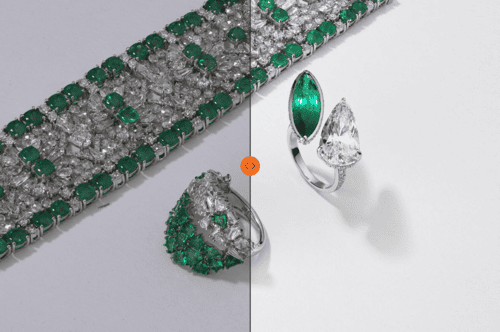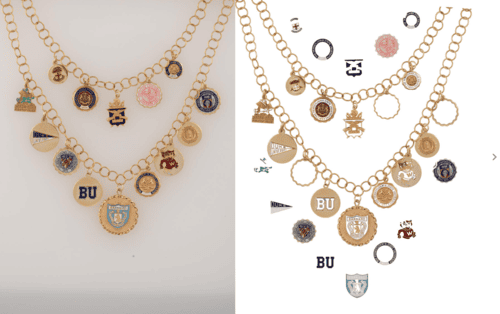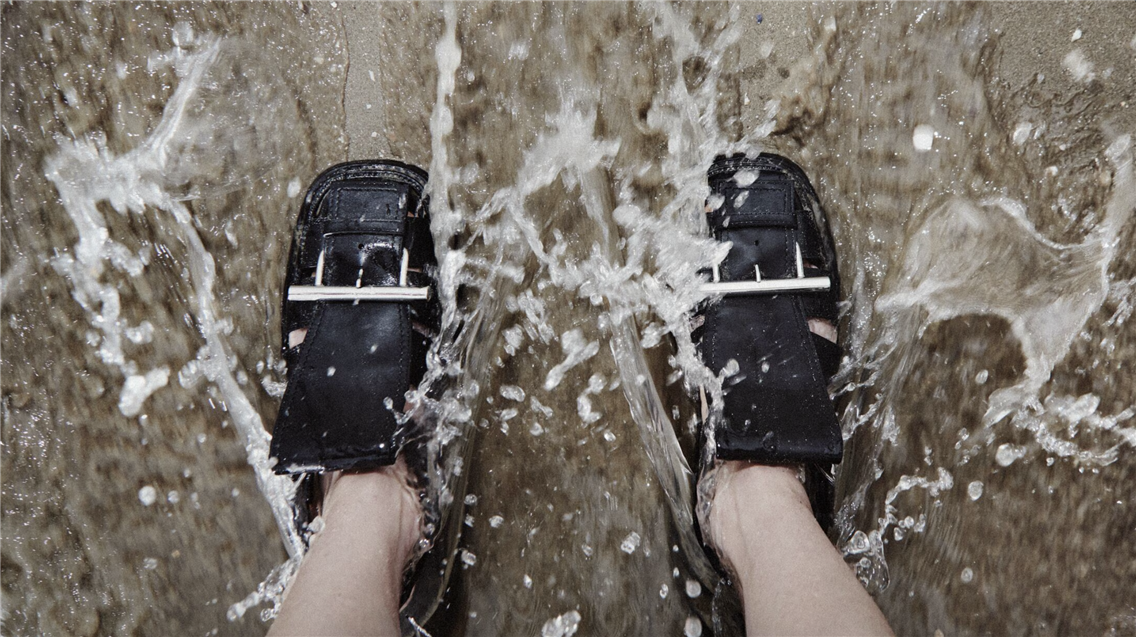Maximizing Online Sales with Different Types of High-Quality eCommerce Visual Content: A Comprehensive Guide

The three-second rule governs digital commerce now. That's exactly how long brands have before potential customers decide whether they deserve attention or get lost in the endless scroll. Visuals have become the primary sales force in online retail, carrying more persuasive power than product descriptions or brand messaging ever could. Creating visual content that converts means finding out what makes people stop scrolling, start wanting, and click buy is a process comprising two equal parts: art and behavioral science.
This guide explores which visual strategies move the needle, why certain types of content belong on particular online channels, and how to build a visual identity that drives measurable business results. Because in a marketplace where everyone's fighting for the same eyeballs, visuals need to work hard.
What is eCommerce Visual Content?
Let’s start with the basics: eCommerce visual content is any photo, video, or image you use to present and promote your products online. Think of it as a digital storefront. Customers can’t physically pick up or try a product before buying it, so visuals do the essential job.
A great product image can make the difference between a “meh” scroll and a “take my money” tap or click. The same goes for videos, whether it’s a demo, lifestyle clip, or a behind-the-scenes look at how your product is made. Visuals build trust, tell your story, and showcase your products in a detailed and appealing way.
Types of Commercial Product Photography
You’re probably already using both photos and videos in your marketing, but are you using them strategically? Let’s dig into the different types of visual content you should consider.
Product PhotographyThis is your bread and butter: clean, detailed shots of your products, typically on a white background, but not necessarily. It’s not the flashiest type of content, but it’s absolutely essential. These images help customers see what they’re buying, with no distractions. Pro Tip: Invest in high-quality photography, even for simple product shots. These images are often the first point of contact with your brand, and a well-lit, crisp product image says, “we’re serious about quality.” Related read: The Ultimate Guide to eCommerce Product Photography |  |
 | Still Life PhotographyStill life shots allow brands to get a bit more creative. Instead of focusing solely on the product, you can introduce props, textures, and backgrounds that reflect your brand’s personality. These photos work wonders for social media or online store pages, where creativity catches attention. Pro Tip: Use still-life photos to showcase how your product fits into everyday moments. For example, instead of just placing jewelry on a plain background, pair it with items that people might naturally have nearby, like a favorite book, a cup of coffee, or a handwritten note, to suggest how the jewelry complements daily life. For skincare, show the product alongside things like a clean towel, a glass of water, or a small plant to hint at freshness and routine without feeling staged. These simple, relatable setups help customers imagine using the product in their own space, making your photos feel authentic and inviting. Related read: eCommerce Still Life Photography for Fashion and Jewelry Brands |
Lifestyle PhotographyHere’s where you show your product in action by capturing an actual person interacting with it. Lifestyle photography takes your product out into the real world, letting potential customers visualize themselves using it. Pro Tip: Keep an audience in mind. If your customer is likely a young professional in a sprawling metropolis, show your product in settings that resonate with that lifestyle, maybe in a trendy café or at a chic office space. Related read: Strategic Impact of Lifestyle Photography on eCommerce Business |  |
Fashion Editorial Photography
Fashion brands, take note: editorial photography is where things can be truly artistic. It evokes the feeling and tells the story behind your brand. These are stylized, high-end shoots that often end up in lookbooks or as some of the most impactful campaign images.
Pro Tip: Use this photography to create a mood that uniquely belongs to a brand. Whether it’s eclectic or minimalist, editorials bring a brand’s style to life.
Related Read: The Essential Role of Fashion Photography in Branding
Fashion Campaign Photography
If you’re launching a new product or collection, fashion campaign photos tie it all together. These high-impact images are designed to tell a concept and are often the foundation of larger marketing pushes. Think of them as the hero shots for a campaign.
Pro Tip: Plan campaign visuals to be consistent across all promotional channels regardless of whether it's your website, social media, PR, and email marketing. Campaign photos should be instantly recognizable and on-brand.
Social Media Photography
Social media is fast, effortless, and often less polished than traditional product shots. But that doesn’t mean they should be taken lightly. Social media photos need to be engaging, on-brand, and often tailored to the specific platform.
Pro Tip: Mix it up! Show behind-the-scenes content like snapshots from events or collaborations. Social media is a brand-awareness playground; use it to connect with your audience in a more casual, authentic way.
User-Generated Content (UGC)
There’s no stronger endorsement than real customers showing off products. UGC adds authenticity and builds a sense of community around a brand. Encourage customers to share their photos featuring your brand’s products and reward them by shouting out their content. Or consider collaborations with influencers and content creators.
Pro Tip: UGC is perfect for social proof, so showcase it on product pages or social media to build trust and create a sense of inclusion.
A Guide to Video Content for eCommerce
360 Spin Product Videos
These videos offer a detailed look at a product from every angle. Ideal for giving customers that in-store experience online, these videos allow potential buyers to feel more confident in their purchase.
Pro Tip: Add 360 spin videos to product pages, especially for items where details matter, like jewelry, electronics, or apparel.
Related Read: Breaking Down 360-Degree Spin Videos for eCommerce
eCommerce Videos
E-commerce videos are a fantastic way to showcase your product in action. Let them imagine themselves using the product in their day-to-day life.
Pro Tip: Use e-commerce videos to highlight the benefits of a product without being overly salesy. Show, don’t tell.
Related read: The Power of Product Videos for eCommerce Explained
Creative Commercial Videos
Creative commercial videos present a product in innovative and visually exciting ways while keeping the product as the focal point. These videos often involve engaging visuals, but they never stray too far from showing off the product's features or benefits. The product should remain front and center, even when using playful or artistic elements. This format is ideal for introducing new products or highlighting a unique selling proposition.
Pro Tip: Use creative commercial videos in ads to stand out from the crowd.
Editorial Videos
Editorial videos are often more conceptual and less focused on the product itself. These high-concept, storytelling-driven videos are meant to evoke a mood or emotion that aligns with a brand. They don’t necessarily push for a sale but instead build a deeper connection with the audience through narrative and artistic flair.
Pro Tip: Editorial videos are great for brands that want to emphasize lifestyle and aesthetics over direct product promotion. Use them to elevate a brand’s overall image and create lasting impressions.
3D Animated Videos
If you’ve got complex products or concepts, 3D animations can help communicate them clearly. These videos are particularly effective in industries like tech or design, where showcasing intricate features is crucial.
Pro Tip: Keep the animation concept sleek and simple. Animation serves to enhance understanding, not overwhelm the audience with too much detail.
Related read: The Impact of CGI & 3D Technologies on eCommerce
UGC Videos
Like UGC photos, user-generated videos offer an authentic perspective on a product. Whether it’s a review, unboxing, or demonstration, these videos are seen as more trustworthy than brand-produced content. Customer and influencer reviews are incredibly persuasive. These videos dive deep into the pros and cons of a product, helping other potential buyers make informed decisions.
Pro Tip: Know your audience preferences to choose the right influencers to boost the reach and engagement of your UGC videos. Encourage honest reviews from trusted voices in your niche. Authenticity is key here. People are more likely to trust real, unbiased feedback.
Unboxing Videos
Unboxing videos translate the excitement of receiving and opening a product. They’re especially popular in tech, beauty, and luxury sectors where packaging and presentation significantly matter.
Pro Tip: Highlight the consciousness of packaging and attention to detail in these videos to create a sense of value and excitement.
Comparison Videos
If you’re in a competitive market, comparison videos are invaluable. They help potential buyers see why your value proposition stands out from the crowd.
Pro Tip: Be fair and balanced. Highlight the strengths of a product, but don’t exaggerate the weaknesses of competitors; it can backfire.
Educational Videos
Educational videos are all about breaking down the key features of a product or service in a straightforward, easy-to-understand way. They’re great for showcasing what makes a product unique. Whether it's a tutorial, a how-to, or an explainer, these videos show a brand as a knowledgeable, trustworthy resource.
Pro Tip: Keep these videos short and to the point. Focus on the most important features or the primary problem a product solves.
Behind-the-Scenes (BTS) Videos
BTS videos are like a backstage pass to a brand. They give customers a glimpse of the people, processes, and passion behind the products. Whether you're showing the production process, a photoshoot, or a day at the office, BTS videos humanize a brand and make it more relatable. This helps make your clients feel like they are a part of your community every time they interact with your product.
Pro Tip: Use BTS videos to build transparency and trust. Show off your team, your craftsmanship, and the love that goes into making products.
Key Principles in Creating eCommerce Visual Content that Sells
How do you create visuals that not only look good but also sell? Here are a few key principles.
Consistency in eCommerce Visual Content
Consistency is not a buzzword. From product images to social media posts, visuals should all be showcased in the same way. This means using the same color, lighting styles, and retouching across the board. Consistency reinforces brand identity and helps customers recognize brands instantly.
Think of visuals as puzzle pieces. Each one should fit into the larger picture of your brand’s identity, building a cohesive experience that keeps customers coming back.
Ethical Editing in eCommerce Visual Content
Let’s be real: Editing is necessary, but it should never cross the line into deception. Ethical editing means enhancing visuals while staying true to what the product actually looks like. Customers appreciate authenticity, and misleading visuals will only lead to disappointment (and returns).
Touching up an image or a video to remove dust or imperfections is fine. Changing the color or altering the product to look better than it is? Not so much. We always keep it real to make customers happy.
Aligning eCommerce Visual Content with a Brand’s DNA
Your visuals should scream YOU. Whether you're a luxury jewelry brand or a casual fashion label, content needs to reflect a brand’s DNA. This means everything from the style of photography to the models chosen should be in line with brand values and the lifestyle your customers aspire to.
Your brand's DNA should guide every visual decision. A high-end brand might use dramatic lighting and models in glamorous settings, while a playful, everyday brand might opt for bright colors and more approachable imagery.
Visual Storytelling in eCommerce Visual Content
Visuals should do more than just show a product. Whether it’s the story of how your product is made, how it fits into your customers' lives, or the ethos of your brand, storytelling builds emotional connections.
Visual storytelling turns a one-time transaction into a long-term relationship. Customers who connect with brands on an emotional level are more likely to become loyal, repeat buyers.
How to Choose the Right Partner for eCommerce Visual Content Creation
At this point, you might be thinking, “That all sounds great, but where do I start?” Well, one of the most important steps in creating stellar visual content is choosing the right creative team. Here’s what you should look for:
Experience and Portfolio
Look for a partner with a proven track record in eCommerce visual content creation. Evaluate their portfolio to see if they have successfully produced high-quality content for brands similar to yours in terms of product type, style, and target audience.
Don’t just look at the pretty pictures, think about the strategy behind them. You want a partner who understands both the creative and the business sides of visual content.
Specialized Team
The truth of the ecommerce industry: it takes a village to create great visual content. You need a team that includes photographers, videographers, stylists, creative directors, and post-production experts. Each of these roles brings a unique skill set to the table, ensuring visual content is polished, creative, and on-brand.
Technology and Equipment
State-of-the-art technology is non-negotiable. You want your content creators who use high-res cameras, top-tier lighting setups, and cutting-edge editing tools. This is especially important for products that require precision, like jewelry, electronics, or luxury items.
Knowledge of Different Platform Specifications
Each eCommerce and social media platform has its own set of requirements and best practices when it comes to visual content. A visual content partner should know these inside and out. Whether it’s Instagram’s vertical image format or Amazon’s strict guidelines for catalog photos, a partner needs to create content that meets each platform’s specifications perfectly.
Content that looks great on a website might not work as well on marketplaces like Macy's or Kohl's. A knowledgeable partner will optimize visuals to ensure they load quickly, fit the right dimensions, and follow platform guidelines, all while maintaining the high-quality look you need to stand out. For example, they’ll know the importance of keeping image file sizes optimized for faster page loading on Shopify.
Industry Expertise
A visual content partner should understand your industry. Whether it’s fashion, tech, or home goods, each industry has its trends and challenges, and a photography partner needs to be up to speed on what works. A studio with industry expertise can anticipate a brand's needs and offer insights that someone less familiar might miss. They’ll know how to appeal to your target market.
Creative Direction and Flexibility
A good partner will come to the table with fresh ideas and a creative vision, but they’ll also be flexible enough to adapt to your brand’s unique style. Look for someone who can bring their expertise to complement and enhance your vision.
Post-Production and Retouching
Retouching, color grading, and editing can take good visuals and make them great, but only if done right. A studio with a skilled post-production team knows how to enhance images without overdoing it.
It’s good to see before-and-after examples of their retouching work. This will give you a sense of how far they take the edits and whether their style matches your brand’s aesthetic.
Consistent Communication and Project Management
Great visuals don’t just happen; they’re the result of clear communication and solid project management. A professional studio should keep you in the loop at every stage, from pre-production to final delivery.
Scalability and Long-Term Partnership
Visual content demands scale alongside business growth. Look for a partner who can scale too, offering a long-term relationship that can evolve as your brands do.
Budget Transparency
Finally, there's the matter of budget. You don’t want to be hit with unexpected fees halfway through a project. A transparent pre-budgeting will help plan and prioritize visual content needs without compromising quality.
The Place of Visual Content in eCommerce
The right mix of photography and video tailored to your brand, product, and audience serves as the foundation for online stores. By understanding the unique strengths of each visual content type and applying key principles such as consistency, ethical editing, and authentic storytelling, brands can create a compelling digital storefront and reach their customers.
Choosing the right creative partner is equally crucial. A team with industry expertise, technical know-how, and a collaborative approach ensures your visual content looks stunning and aligns with your business goals and platform requirements. As eCommerce continues to evolve, brands that invest in strategic, high-impact visuals will be best positioned to capture attention, foster loyalty, and achieve measurable growth.














